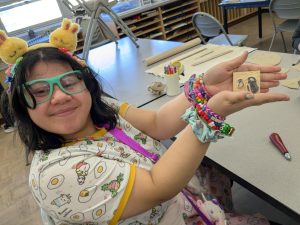ADHD – Something to Know About
April 19, 2018
ADHD, or Attention Deficit Hyperactivity Disorder, a common neurobehavioral disorder/condition, affecting 11% of children in the US and 5% of adults, inhibits the child or adult from control over their executive functioning skills such as attention or concentration, social skills, organization, and memory.
ADHD has been around for a long time, with mentions of it through history. The disorder became more well known after 1902 when a study was conducted on it. Then in 1994, the difference between ADD (attention deficit disorder) and ADHD was established. The change stemmed from the fact certain children with most of the ADHD symptoms were not quite as hyperactive as others.
“Even though these are the official labels, a lot of professionals and lay people still use both terms,” CHADD mentioned. “ADD and ADHD. Some use those terms to designate the old subtypes; others use ADD just as a shorter way to refer to any presentation.”
The causes of ADHD are not well known to scientists. There is data to prove that genetics play a large part in the role of ADHD. Other theories suggest it could be due to early head trauma.
“Despite multiple studies, researchers have yet to determine the exact causes of ADHD,” ADDA (attention deficit disorder Association) claims. “However, scientists have discovered a strong genetic link since ADHD can run in families. More than 20 genetic studies have shown evidence that ADHD is strongly inherited.”
The symptoms that surround the disorder all revolve around the use of the executive functions in the brain. ADHD impairs this function, making so that it is harder for ADHD sufferers to work with their memory, social skills, emotional regulation, and organization.
According to ADDA, some symptoms that occur within someone with ADHD are:
- Often fails to give close attention to details or makes careless mistakes in schoolwork, at work, or with other activities.
- Often has trouble holding attention on tasks or play activities.
- Often does not seem to listen when spoken to directly.
- Often does not follow through on instructions and fails to finish schoolwork, chores, or duties in the workplace (e.g., loses focus, side-tracked).
- Often has trouble organizing tasks and activities.
- Often avoids, dislikes, or is reluctant to do tasks that require mental effort over a long period of time (such as school work or homework).
- Often loses things necessary for tasks and activities (e.g. school materials, pencils, books, tools, wallets, keys, paperwork, eyeglasses, mobile telephones).
- Is often easily distracted
- Is often forgetful in daily activities.
ADHD affects mostly young children and wears off into their teen years. For some cases though, ADHD can follow a person well into their adulthood. Most children are treated for ADHD with medication (stimulants) that help control their brain and mental activity (allowing for focus). There is also CBT, Cognitive Behavioral Therapy, that teaches how to modify certain thoughts before they lead into action.
ADHD, while a disorder, does not mean the person who has it is impaired. Many people are able to live with ADHD and not have it affect their life drastically. Though, it does provide a higher chance of developing anxiety, depression, and other disorders.
Overall, while ADHD is a disorder and can impair a child from learning or an adult from focusing well, it can be treated and grown out of.





